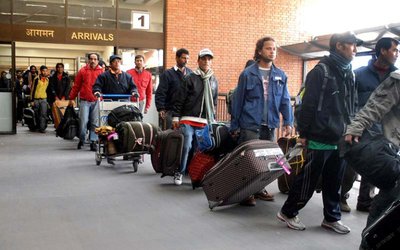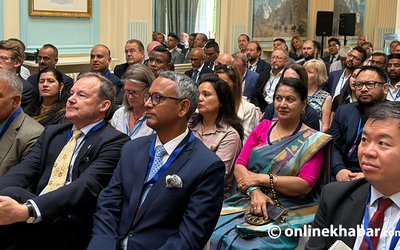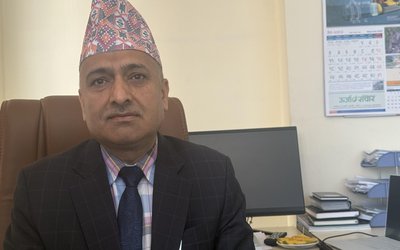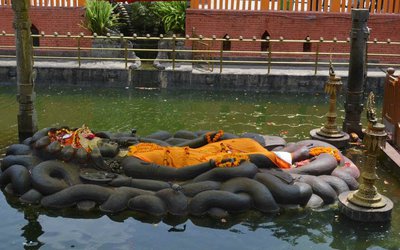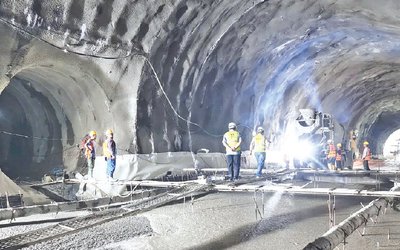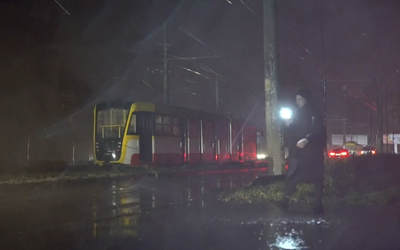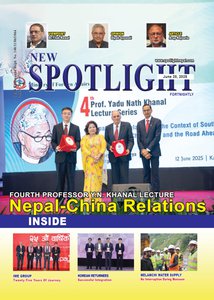
As you know, the RDIF is a multi-donor initiative. On behalf of all partnering donors – DFID, Switzerland, Denmark, Norway and Australia - I am pleased to witness that RDIF has had such a positive impact in helping to strengthen democratic values and principles, respect for human rights and supporting political and social inclusion. The presentations we have just heard speak for themselves. But I think it is important to celebrate some of the key successes of the RDIF today.
The RDIF was set up in 2006, during a time when it was very difficult for civil society’s voice to be heard and many excluded groups were struggling for representation. Over 1.3 million people have directly benefited from RDIF through training and orientation, awareness campaigns, workshops and community mobilisation.
For instance, in the run up to the 2008 CA elections, the RDIF helped bring democracy closer to the people by supporting massive civic and voter awareness campaigns in over 1,500 communities with high concentration of marginalised populations. A post-campaign study revealed that people’s awareness of election processes in the areas targeted increased from 37 per cent to 84 per cent. The 2008 elections, as we know, resulted in the most representative CA in Nepal’s history.
Another area of progress, with support from the RDIF, has been on tackling violence against women at the local level. For example in Nawalparasi district alone, 300 women received GBV services and 59 women victims cases were heard through the coordination efforts of CSOs with the police and the local women’s development officer. In Achham, one VDC was declared as “Chaupadi –free” (women having to live in a cow-shed during menstruation) as a result of the work of one RDIF partner. RDIF partners across the country been able to raise awareness and address issues of harmful social practices, such as ‘untouchability’, child marriage, and bonded labour.
Similarly, as shown in the presentation, there is evidence of RDIF partners through their constructive engagement with the VDCs and DDCs being able to better access services and resources on behalf of the target communities. One of the key features of RDIF has been in ‘reaching the difficult to reach’. RDIF’s partners have been located in nearly all of Nepal’s districts - 90% (68 districts), reaching over 1000 VDCs including in very poor and remote areas.
But, whilst it is very important to raise the voice of the poor and vulnerable to demand their rights and access resources - which RDIF has done - it is also important to work to support Government to respond to those demands. Which is what DFID and other partners have been doing through a number of programmes. For instance, DFID has helped the Government to develop its National Strategy and Action Plan to combat Gender-based-violence. Other joint donor programmes, such as the LGCDP and sector programmes are working in closely with Government to help improve service delivery in in health, education and other sectors. This collaborative partnership is very important.
Whilst RDIF is coming to a natural close – after 7 successful years – I think I can speak for all the development partners in saying that we remain fully committed to continuing the type of work that RDIF has started, through other programmes and avenues. 3 of the four partners are currently working to develop a Joint Governance Facility, which will continue to support state and non-state actors. The RDIF exit strategy has also focused on helping partners to access other resources and programmes. We will also continue to support the Government of Nepal through collaborative partnerships between state and non-state actors.
Before closing, I would like to acknowledge the very constructive engagement and coordination from our civil society partners, from local government officials and central government.
Hearing the testimony of these three women showed that this type of foreign aid was necessary but could never be described as 'evil'. Anyone who truly thinks this has not been outside of Kathmandu to see the real impact that aid programmes are having on the poorest people in Nepal, I invited to take the person to any of our projects to see the impact, whether it be the new Sabha Khola bridge, or a woman who no longer suffers domestic abuse, or a mother who can give birth in a functioning health centre. Anyone who would make such a remark is only showing how little they actually know about what is happening around Nepal and the fantastic work that is being done.
None of us want to see a country dependant on aid, but it is the Government of Nepal and its leaders who have the means at their disposal to prevent the country being aid dependant:- provide political stability, pass a full budget, invest in hydropower and infrastructure, support agriculture, support job creation and within 5-10 years Nepal will no longer be dependent on aid.

